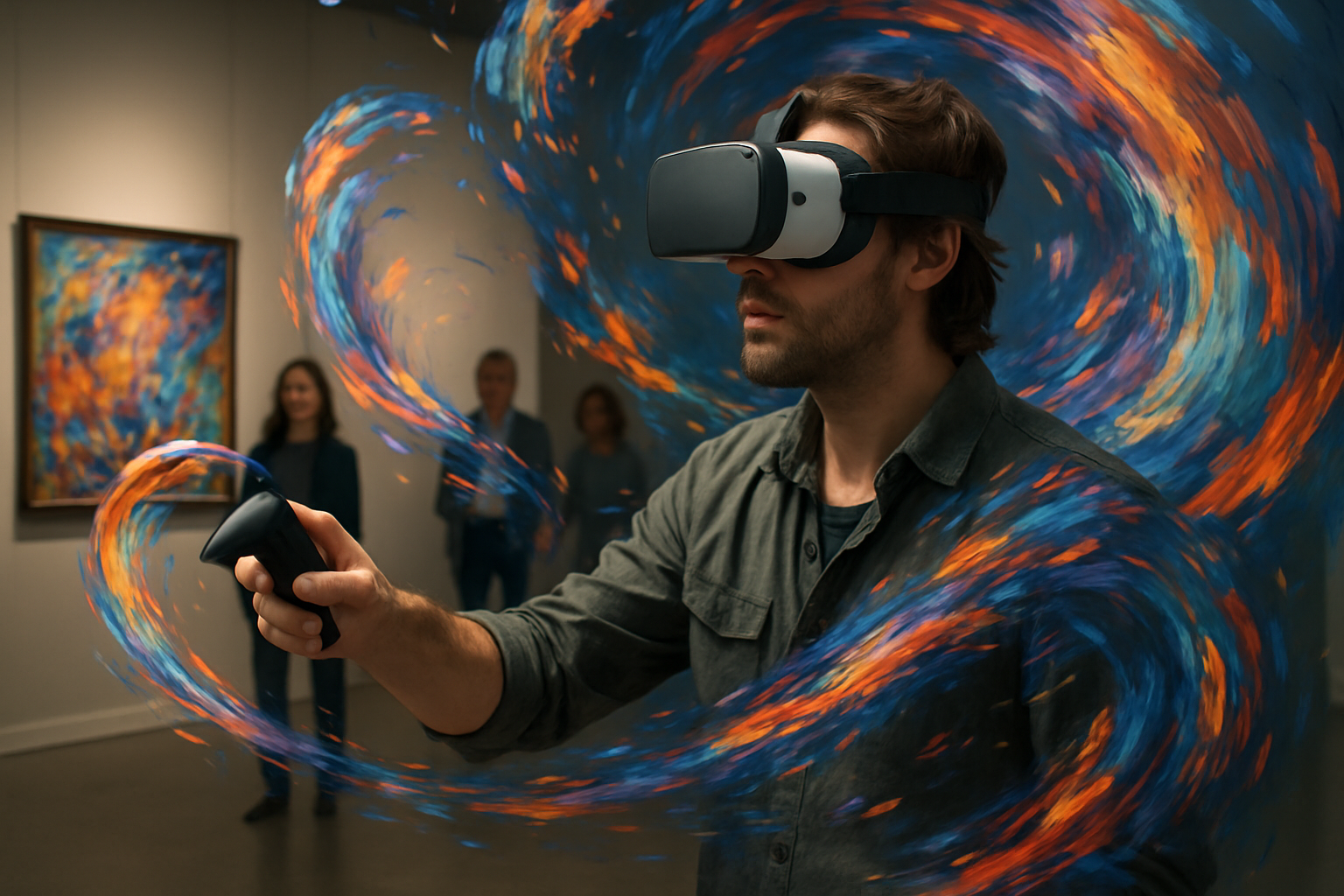The Ephemeral Canvas: Digital Art's Fleeting Masterpieces
In the ever-evolving landscape of contemporary art, a new movement is captivating audiences and challenging traditional notions of permanence. Digital ephemeral art, characterized by its temporary nature and technological underpinnings, is reshaping how we perceive, create, and consume artistic experiences. This innovative form of expression blends cutting-edge technology with artistic vision, resulting in fleeting masterpieces that exist only for a moment before vanishing into the digital ether. As galleries, artists, and collectors grapple with this transient medium, the art world finds itself at a fascinating crossroads of tradition and innovation.

Technological Foundations
At the heart of digital ephemeral art lies a complex ecosystem of technologies. Augmented reality (AR) and virtual reality (VR) play crucial roles, allowing artists to create immersive, temporary environments that blur the lines between the physical and digital worlds. Blockchain technology has also emerged as a key player, enabling artists to create and authenticate digital works that can be programmed to disappear after a set period. These technological advancements have opened up new possibilities for artistic expression, challenging creators to think beyond the confines of traditional mediums.
The Artistic Philosophy of Impermanence
Digital ephemeral art embodies a philosophy that celebrates the transient nature of life and experience. Artists working in this medium often explore themes of memory, perception, and the passage of time. By creating works that exist only briefly, they force viewers to engage more deeply and immediately with the art, knowing that the experience is fleeting. This approach has sparked debates about the value of art that cannot be preserved, collected, or revisited in the traditional sense, challenging long-held notions about the role of art in society.
Curating the Temporary
Museums and galleries are grappling with the unique challenges posed by digital ephemeral art. How does one curate, display, and preserve works that are designed to disappear? Some institutions have begun experimenting with dedicated digital spaces and time-limited exhibitions that embrace the temporary nature of these works. Others are exploring ways to document and archive ephemeral pieces, capturing the essence of the experience without necessarily preserving the work itself. This shift is forcing curators to rethink their roles and adapt to a new paradigm of art presentation.
The Economic Impact on the Art Market
The rise of digital ephemeral art is sending ripples through the art market. Traditional models of valuation and ownership are being upended as collectors grapple with the idea of purchasing works that may cease to exist. Some artists have embraced this challenge by creating limited-edition digital works or offering unique experiences tied to their ephemeral creations. Non-fungible tokens (NFTs) have emerged as a potential solution, allowing for the ownership and trading of digital assets while still maintaining their ephemeral nature. This new economic landscape is forcing galleries, auction houses, and collectors to adapt and innovate.
Ethical and Environmental Considerations
As with any emerging technology, digital ephemeral art raises important ethical and environmental questions. The energy consumption associated with blockchain technology and the electronic waste generated by AR and VR devices have led to concerns about the environmental impact of this art form. Additionally, issues of digital privacy and data ownership come into play when creating and experiencing ephemeral works. Artists and institutions are grappling with these challenges, seeking ways to create responsible and sustainable practices within this new artistic paradigm.
The Future of Digital Ephemeral Art
As technology continues to advance at a rapid pace, the future of digital ephemeral art looks bright and unpredictable. Emerging technologies like holography and brain-computer interfaces promise to push the boundaries of what’s possible in temporary digital experiences. Some speculate that we may see entire virtual museums dedicated to ephemeral works, or city-wide AR installations that transform urban spaces for limited periods. As artists continue to experiment and innovate, digital ephemeral art is poised to play an increasingly significant role in shaping the future of artistic expression and cultural engagement.




